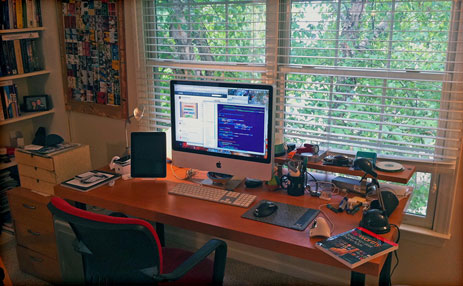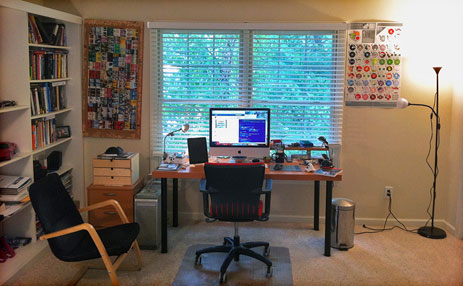Link posts outnumber articles on this site three to one. Some of you may remember about a year ago when I first made a change to the way links were posted within the RSS feed. And then, just a few weeks ago, savvy readers may have noticed things changed again.
Up until a few weeks ago, the <link> element of a link post in the RSS feed would point to this site. Now it points readers away from shawnblanc.net and directly to the linked-to URL.
I made the change as a short-term experiment. I was curious to see how it would affect:
- those of you who read this site via RSS.
- pageviews.
- my approach to posting links.
The feedback I have recieved from readers has been nothing but positive. And the affect on pageviews has not even been noticeable (August was this site’s biggest traffic month to date, and September is close on its heels).
Something I did not expect was just how liberating the new link behavior would be for me. Any prior sense I may have had about “pimping pageviews” has been completely removed simply by default. Posting a link to the RSS feed does not directly send any pageviews to this site since readers within RSS are directed straight to the linked-to URL.
Needless to say, the experiment is over. I am keeping things this way.
For those who are curious, the change was mostly prompted because I now read websites and subscriptions differently than I did a year ago. I now read much less on my Mac using NetNewsWire and Safari, and much more my iPhone and iPad and in Instapaper.
I used to open NNW and comb through my feeds, opening the ones I wanted to read in Safari in the background, and then going and reading all the open tabs. It was nice to have links open the site they were sourced in instead of the final destination, because that way when I got to that link I could remember why I was there and who had sent me to it.
Now I read feeds in shorter, more-frequent chunks. And I send a lot to Instapaper. For the sites I read which do not send links directly to the linked-to URL, that extra tap in my iPad seems more annoying than it used to be.
Trust and attention, or eyeballs
As a publisher it is difficult to abandon pageviews and subscribers as the metrics we compare the success and value of our site against. We all “know” that what is more important than pageviews and subscribers is the actual attention and trust of a few readers. But how often do we act on that knowledge, versus paying it lip service? To act on it means anything I can do to make the reading experience more pleasant and trustworthy is a win — even if it hurts pageviews.
It used to be that pageviews did equate to impact and reader engagement. If people were engaging with your site, they were visiting it. But in today’s Web, engaged readers don’t always visit. Instead they are reading your content via their Tumblr Dashboard, feed reader, or Instapaper account. Not to mention how easy it is to conjure up anonymous pageviews; uninterested, drive-by traffic is getting cheaper by the day.
Consider it in terms of coffee shops. The trendy coffee shop on the corner of First and Main may get a lot of regular foot traffic. But it’s mostly tourists. However, the hole-in-the-wall roastarie which is situated down a few blocks and brews the best Americano in town, is the one serving all the locals. That’s the coffee shop you’ll be told to visit if you ask any local. And that’s where you’ll be sure to come back to next time you’re in town.
Leaving the coffee analogy, another metric of reader engagement is RSS subscribers. This is currently a more valid number than pageviews to measure how many engaged readers you have, but I think subscribers are the new pageviews. Which means subscribers as a metric is already on its way out (though slowly). And so I don’t know if there are any reliable quantitative metrics for impact left.
To put it simply: you can no longer measure value by pageviews, impressions, or subscribers. And so it’s folly to build a site that uses those numbers to measure its success.
As publishers, we should be building our websites and distributing our content with the goal of earning trust, not numbers. If we hope to grow our reach — and make even a modicum of income from our content — we won’t be able to lean on pageviews and subscribers alone. Trust and attention that are our most valuable commodities. Eyeballs can be bought and pageviews can be forced. But attention and trust is something that can only be earned over time.


